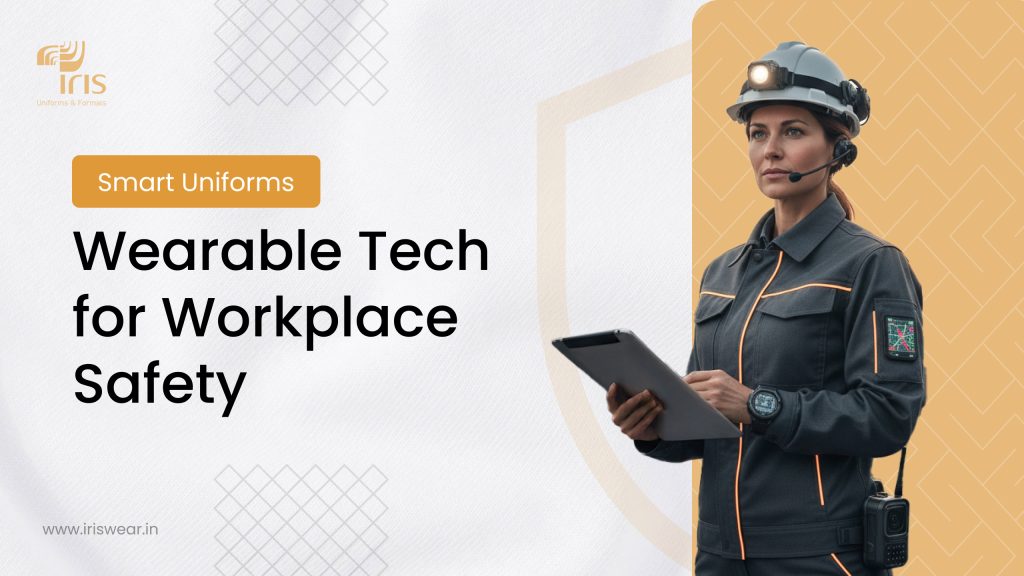
Key Components of a Fire Uniform You Must Know
The role of firefighters is perhaps among the most challenging and high-risk professions in the world. Firefighters risk life every day to save lives, property, and the environment. To ensure that they do their job effectively and safely, they mainly depend on equipment. The most crucial piece of equipment during firefighting operations is the uniform itself, designed to protect in the toughest conditions.
A firefighter’s uniform is not just about identification it serves as a barrier against heat, flames, chemicals, and falling debris. As a custom uniform supplier, Iris is committed to designing uniforms that provide maximum protection while ensuring enough flexibility for the demanding physical activity the job requires.
In this blog, we’ll explore the key parts of a firefighter’s uniform and explain why each component is essential on the field.
Key Components of a Fire Uniform
1. Firefighter Helmet
The helmet is the first thing that comes to mind when one thinks of a firefighter. It’s not only a symbol of profession, it’s a crucial piece of equipment that can mean the difference between life and death.
Purpose:
The helmet guards the firefighter’s head against heat, falling objects, and electrical shock. Helmets today are made of fibreglass or thermoplastic materials that can resist heat.
Features to look for:
- Impact resistance
- Heat protection
- Eye shields or built-in goggles
- Neck protection in the back
In most designs, a reflective strip or torch is provided to facilitate visibility in dark or smoky conditions.

Firefighter Helmet
2. Protective Hood
Sensitive and burn-prone areas are those around the ears, neck, and jaw. That is where the protective hood is useful. The hood helps shield these areas from intense heat and flames, providing added safety and protection in hazardous environments.
Purpose:
The hood is concealed by the helmet and coat collar. The hood covers parts of the head not shielded by the helmet or coat.
Common materials:
- Nomex
- PBI (Polybenzimidazole)
These are fire-resistant and work as a second barrier from fire.
3. Turnout Gear (Bunker Coat and Pants)
The flame resistance uniform, also known as turnout gear or bunker gear, is a critical part of a firefighter’s protective equipment. It consists of a coat and pants designed to shield the body from extreme heat, flames, steam, and toxic chemicals.
Purpose:
The primary function of this gear is to provide protection against fire, intense heat, steam, and hazardous chemicals.
Configuration:
The gear normally consists of three layers:
- Outer shell: Provides flame and heat resistance
- Moisture barrier: Stops water and steam
- Thermal liner: Excludes harsh heat
Fit is important:
Turnout clothing should fit neither too loose to be cumbersome, nor too tight to restrict movement.
Reflective strips are typically added to enhance visibility, particularly in low or smoky environments.
4. Gloves

Firefighter Gloves
No outfit is complete with proper gloves. Firefighters want their hands to be covered but still flexible. Factory uniform experts understand the importance of gloves designed for high-risk environments.
Purpose:
Fire gloves are needed for use when working with hot items, sharp refuse, or chemical exposure. They also provide a safe grip on ladders, hoses, and equipment.
Good fire glove characteristics:
- Heat and cut resistance
- Waterproofing protection
- Good finger dexterity
- Strengthened seams
Correctly designed gloves can make the difference between completing a job successfully or getting injured.
5. Boots
Fire boots do more than protecting from fire. They also cushion the ankles and feet for long periods of standing or walking.
Purpose:
They protect the feet and lower legs from burns, falling debris, and jagged fragments of material. Fire boots are also designed to help prevent slipping on slippery or greasy surfaces.
Typical features:
- Steel or composite toe caps
- Slip-resistant soles
- Puncture-resistant midsoles
- Waterproof fabrics
- Pull-on design with easy side handles
A well-fitting pair of boots will alleviate fatigue and enable firefighters to function optimally during prolonged operations.
6. Self-Contained Breathing Apparatus (SCBA)
Fire accidents on site usually comprise heavy smoke and harmful gases. It is not safe to breathe in such conditions without safety gear. SCBAs provide between 30 and 60 minutes of air, based on size and model. While the equipment isn’t necessarily always worn
Purpose:
The SCBA enables firefighters to breathe clean air when the air around them is unsafe.
Parts comprise:
- Air cylinder
- Face mask
- Pressure regulator
- Harness and straps
but is required for most fire emergencies, particularly indoors or in smoky conditions.
7. Personal Alert Safety System (PASS Device)
Safety never comes second, and the PASS device is a big step in the direction of ensuring that firefighters don’t get left behind unnoticed.
Purpose:
It’s a movement-sensitive alarm that automatically sounds if a firefighter hasn’t moved in too long (usually 30 seconds or more), indicating that they may be trapped or injured.
Why it matters:
When every second counts, this small gadget helps rescue teams locate one of their own in a hurry.
8. Station Wear
Underneath all the protective layers, firefighters wear what’s known as station wear.
It is a heat-resistant layer of fabric that functions as a first barrier, particularly when the turnout clothes are not yet donned.
Default elements comprise:
- Long-sleeved shirts
- Pants or coveralls
- Safety boots
The attire can be dark in color and neat in appearance because firefighters also have to interact with the general public and provide non-emergency services at some point during the course of their duty.
9. Firefighter ID and Communication Apparel
Not included in clothing but often worn together with the uniform, this apparel is vital during operations.
Purpose:
Two-way communications equipment like radios help ensure contact with the crew and the command centre. ID or accountability tags are part of most systems used for counting personnel at the scene.
Why it’s important
Understand where each member of the team is and keep them up-to-date to ensure synchronized action and quicker decision-making under rapidly changing circumstances.

Firefighter ID and Communication
Final Thoughts
A firefighter uniform is not just a dress code, it’s a precision-crafted blend of protection, utility, and comfort. Each piece and each layer serves a purpose and is the likely key to triumph in times of desperation. Firehouses rely on trusted industrial uniform manufacturers to ensure every uniform meets strict safety standards. They also invest in having the equipment serviced properly and up to date because where life or death is on the line, nothing less than perfection will do.
Whether you’re buying to equip your team, are looking to learn about fire safety, or simply enjoy the equipment behind the courage of firefighters knowing what each piece does is a good starting point.





